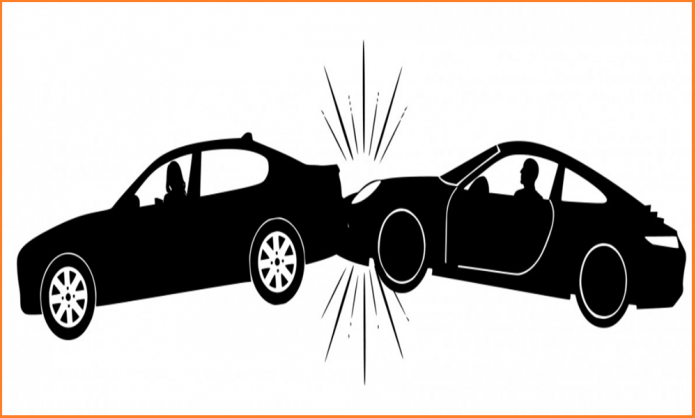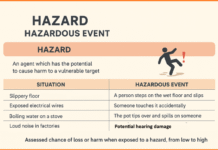In recent years, India has witnessed a significant increase in the number of vehicles on its roads, accompanied by a growing concern for road safety. Recognizing the need to enhance safety standards, the Indian government has taken steps to mandate certain minimum safety features in cars. These measures aim to reduce road accidents, injuries, and fatalities, fostering a safer driving environment for all. In this article, we will explore the minimum safety features mandated by the Indian government for cars.
- Airbags:
One of the primary safety features mandated by the government is the inclusion of airbags in cars. Airbags serve as a crucial component in mitigating the impact of a collision by providing a cushioning effect for the occupants. As per government regulations, cars must be equipped with dual front airbags, offering protection to both the driver and the front passenger.
- Anti-lock Braking System (ABS):
The Anti-lock Braking System is designed to prevent the wheels from locking up during braking, allowing the driver to maintain steering control. ABS has become a standard safety feature in cars, ensuring better stability and reducing the risk of skidding during emergency braking situations.
- Seat Belt Reminder:
To encourage the use of seat belts, the Indian government mandates the inclusion of a seat belt reminder system in cars. This feature alerts occupants if they have not fastened their seat belts, promoting responsible and safe driving practices.
- Speed Alert System:
In an effort to curb over-speeding and promote adherence to speed limits, cars are required to have a speed alert system. This system notifies the driver through audio and visual alerts when the vehicle exceeds a specified speed limit.
- Reverse Parking Sensors:
Reverse parking sensors are essential in preventing accidents while parking. The government mandates the inclusion of these sensors in cars to assist drivers in avoiding obstacles and pedestrians when reversing.
- Child Safety Locks:
Child safety locks are crucial for ensuring the well-being of young passengers. Cars must be equipped with child safety locks on the rear doors, preventing accidental opening and enhancing the safety of children inside the vehicle.
- Crash Test Compliance:
Cars sold in India are subject to mandatory crash tests to assess their structural integrity and safety features. Compliance with crash test standards is essential for ensuring that vehicles meet the necessary safety benchmarks.
- High-Speed Alert System:
In addition to speed alerts, cars are required to have a high-speed alert system that activates when the vehicle reaches a predefined high speed. This feature aims to discourage reckless driving and enhance overall road safety.
Electronic Stability Control (ESC)
ESC is an advanced safety system that helps drivers maintain control over their vehicles in situations where they might lose traction. It is particularly effective in preventing skidding and lateral sliding during sudden maneuvers, such as swerving or steering to avoid an obstacle. ESC works by continuously monitoring various vehicle parameters, including wheel speed, steering input, and lateral acceleration. When the system detects that the vehicle is losing traction or is on the verge of skidding, it intervenes by selectively applying brakes to individual wheels and, in some cases, adjusting engine power.
The implementation of minimum safety features in cars by the Indian government marks a significant step towards creating a safer and more secure driving environment. These regulations not only protect vehicle occupants but also contribute to reducing the overall road accident fatality rate. As technology advances, it is essential for the automotive industry to continue innovating and incorporating additional safety features to further enhance the well-being of road users in India. By prioritizing safety, the nation can work towards achieving a future where road accidents are minimized, and every journey is a secure one.
Frequently Asked Questions (FAQs) About Car Safety
- What are the essential safety features every car should have?
- Airbags (dual front airbags are commonly mandated).
- Anti-lock Braking System (ABS).
- Electronic Stability Control (ESC).
- Seat Belt Reminder.
- Speed Alert System.
- Reverse Parking Sensors.
- Child Safety Locks.
- High-Speed Alert System.
- Why are airbags important in cars?
- Airbags provide a cushioning effect during a collision, reducing the impact on occupants and minimizing the risk of severe injuries.
- What is ABS, and how does it contribute to safety?
- ABS prevents wheel lock-up during braking, allowing the driver to maintain steering control. This technology enhances stability and reduces the risk of skidding during emergency braking.
- How does Electronic Stability Control (ESC) work?
- ESC monitors various vehicle parameters and intervenes by selectively applying brakes to individual wheels when it detects skidding or loss of control. It helps maintain vehicle stability during sudden maneuvers.
- What is the purpose of a Seat Belt Reminder?
- A Seat Belt Reminder encourages the use of seat belts by alerting occupants if they haven’t fastened their seat belts, promoting safe driving practices.
- Why are Reverse Parking Sensors important?
- Reverse Parking Sensors assist drivers in avoiding obstacles and pedestrians when backing up, minimizing the risk of collisions.
- What is the High-Speed Alert System, and how does it work?
- The High-Speed Alert System notifies the driver through audio and visual alerts when the vehicle exceeds a predefined high speed, discouraging reckless driving.
- Are Child Safety Locks necessary in cars?
- Child Safety Locks are crucial for preventing accidental opening of rear doors, ensuring the safety of children inside the vehicle.
- How can I check if a car complies with crash test standards?
- Cars sold in India are subject to mandatory crash tests. Check the vehicle’s safety ratings from authorized sources to ensure it meets the necessary crash test standards.
- Is ESC mandatory in all cars in India?
- As of now, ESC may not be mandatory for all vehicles, but it is increasingly becoming a standard feature in many new models, and its inclusion is likely to expand in the future.
- What advancements can we expect in car safety in the future?
- Future advancements may include more sophisticated driver assistance systems (ADAS) and vehicle-to-everything (V2X) communication, further enhancing overall road safety.
- How can I stay updated on the latest safety features in cars?
- Stay informed by regularly checking updates from the automotive industry, government regulations, and safety assessments conducted by independent organizations. Additionally, consult vehicle manufacturers for the latest safety features in their models.





